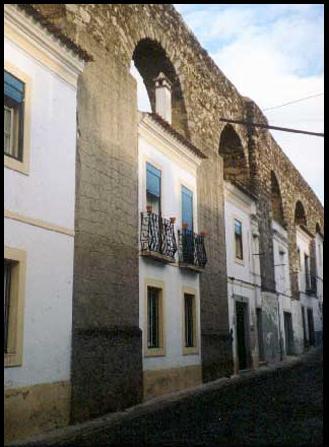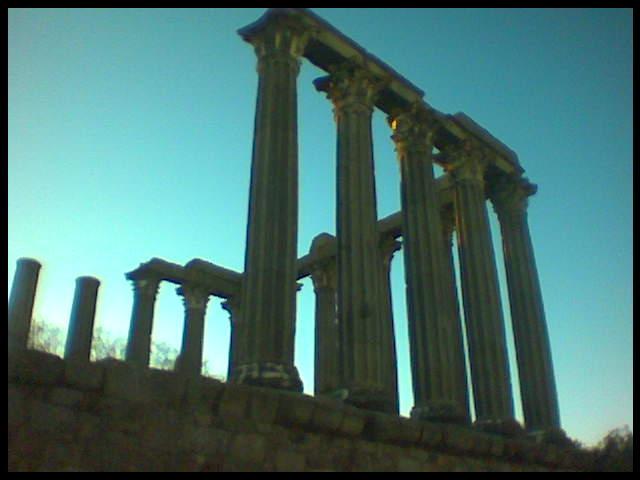Historic Évora , which attracts
more visitors than anywhere else in Alentejo, is a
place of culture listed by UNESCO as world heritage
site.The celts were here, the Carthaginians passed
through, but the first to leave a real mark were the
Romans. The Visigoths followed the Romans early in the
5th century but their footprints have
faded.
Full of Moorish alleys, fine 16th
century granite and whitewashed buildings,
wrought-iron balconies and arcaded walkways, the old
walled town of Èvora sits on a low rise and is still
home to thousands, although the city has long since
expanded beyond its medieval boundaries. The town
plan could have been inspired by a spiders web with
all roads leading to the centre, and it is around the
centre that one can find most of the interesting
monuments.
Praça do giraldo is the hub of the
city if not quite the centre, and a good place to
start a tour if only to pick up a street map at
Turismo (local stand with tourism information for
travelers). Parasol-shaded tables from nearby cafes
are set out in the centre in summer adding to the
atmosphere. We have also the cathedral with its
ill-matched, squared twin towers. This grand
Romanesque-Gothic structure, one of the finest
cathedrals in southern Portugal was built in 1186.
The nearby archbishops palace now
holds the excellent town Museum. Ornate doorways and
windows from the original royal palace of Dom Manuel
and the royal church of St. Francis have been cleverly
incorporated into the structure and form part of the
exhibits.
Beyond the museum lies Portugals
best preserved Roman monument, the Temple of Diana. It
was built in the 2nd or 3rd century AD and, whilst its
actual dedication is not known ,popularly assigned to
Diana. Most of the podium remains but only the north
end of the colonnade which once surrounded the temple
still stands. The temple was apparently used as a
slaughterhouse until late in the 19th century and
this may have helped with its preservation by
preventing the stone being removed for other building
projects.
Also, one of the main attractions
for visitors here is the macabre 17 th century Capela
dos Ossos (The Chapel of Bones), the walls of which
are entirely covered by bones and skulls of Franciscan
monks exhumed from a nearby cemetery. A Latin
inscription over the door warns: The bones here are
waiting for yours.

